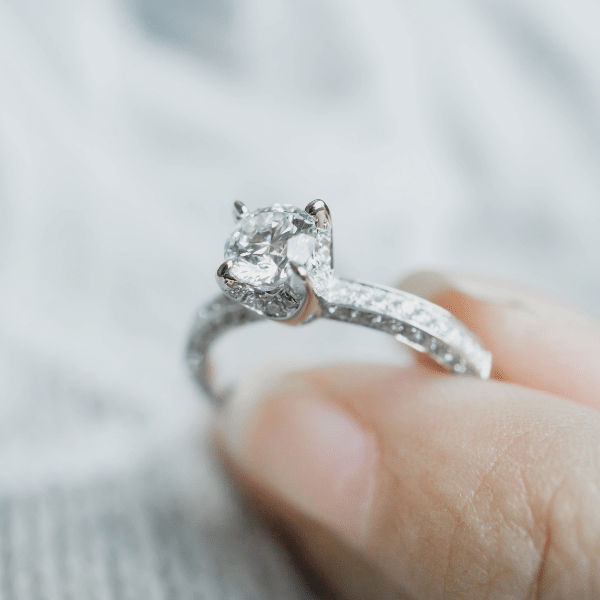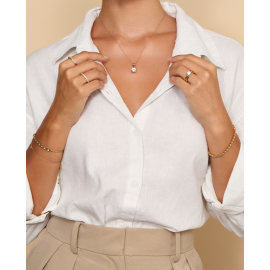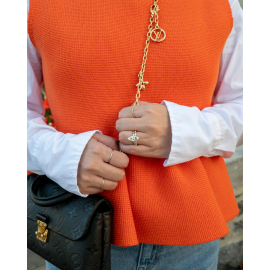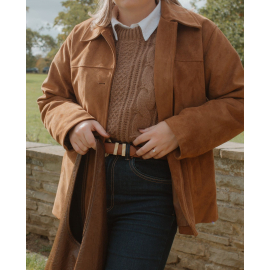Price match guarantee

We’ve teamed up with Klarna to provide flexible payment options, allowing you to shop the way you want. With Klarna, you can split your payment into 3 instalments or choose to pay later, making your shopping experience smoother and more convenient. Your order total must be between £100 and £499 to qualify.

We’ve teamed up with Klarna to provide flexible payment options, allowing you to shop the way you want. With Klarna, you can split your payment into 3 instalments or choose to pay later, making your shopping experience smoother and more convenient. Your order total must be between £100 and £499 to qualify.

May 16, 2022 | by Admin
It is law within the UK that every item of precious metal sold such as Platinum, Gold, Silver is stamped labelling the item with the type of metal it is. Platinum pieces which weigh less than 0.5 grams, 18ct Gold and Palladium pieces weighing less than 1.0 gram and Silver pieces weighing less than 7.78 grams are except from hallmark.
At Diamonds Factory all our products are hallmarked as per UK hallmarking law from London Assay Office (The GoldSmith Company)
The Goldsmiths' Company Assay Office is the oldest assay office in the United Kingdom. It has provided hallmarking services since The Goldsmiths' Company was founded in the 1300s. The company received its royal charter in 1327 and ranks 5th in order of precedence of the 12 Great Livery Companies of the City of London.
Hallmarking dates back to the 1300s when Edward I of England passed a law requiring any item made of silver, which was offered for sale, to be at least of equal quality as that of the coin of the realm (silver currency). The wardens of The Goldsmiths' Company were tasked with visiting workshops in the City of London to assay (test) silver articles. If these articles were found to be below standard they were originally destroyed and the metal forfeited to the King. If they passed, each article received the King's mark of authentication - the mark of a leopard's head. By 1478, there were several hundred workshops and merchants manufacturing silver articles in the City of London. It was not possible for the wardens to visit them all so the merchants were ordered to bring their items to Goldsmiths' Hall for testing and marking and a permanent Assay Office was established in the building. This is the origin of the term hallmark - struck with the King's mark at Goldsmiths' Hall.
In 1544 the Goldsmith's Company adopted the King's mark as their town mark and the mark of the leopard's head is now internationally recognised as the mark of this assay office.
The Goldsmiths's Company Assay Office is still based at Goldsmiths's Hall and remains the oldest company in Britain to be continually trading from the same site. However, it also has two satellite offices; at Greville Street in Hatton Garden in the heart of the London jewellery quarter and within a high security complex near London's Heathrow airport. It now has a new off-site facility within the Dalston-based jewellery manufacturer, Allied Gold. This is the first time in the Assay Office's 700 year history that it has opened permanent hallmarking services on a customer's premises.
In addition to hallmarking, the office has now expanded its range of services to support the jewellery trade and enforcement authorities. It offers a variety of specialist analytical services including nickel, lead & cadmium testing, antique silver dating, non-destructive compositional analysis, plating thickness measurement and a melt and assay service for scrap precious metal carried out in their fully independent on-site laboratory. Other services offered are a jewellery valuation service, laser marking, trading standards assistance, high quality photography and a comprehensive range of training and educational seminars, lectures and specialist events.






Planning a wedding can be a challenging task. From choosing your dream venue and organising the perfect suppliers, to picking up your wedding rings and creating a seating chart to ensure everyone is happy, no detail is overlooked. However, as the big day draws near, you may start to wonder what to do with your engagement ring.
Since the moment you said ‘yes’, you’ve no doubt worn the beautiful diamond engagement ring every day. But are you supposed to wear it on the wedding day and during the ceremony? Or is it better to leave it at home until you’ve tied the knot?
If you’re unsure about traditional wedding ring etiquette, our guide has you covered as we’ll go through all the options to help you decide what to do and in what order your rings should be worn.
How to Wear Engagement Rings on Your Wedding Day
When it comes to wearing your engagement ring on your wedding day, the choice is entirely up to you. Many brides like to see both the engagement ring and wedding band together and have their photographer capture both in the photos. However, others may want the wedding ring to be the focal point. Either way, there is no right or wrong answer and it is down to personal preference and ease.
Here are some options you may want to consider for your engagement ring before walking down the aisle.
1. Leave it in a Safe Place
Leaving it in a safe place, such as at home or in a secure safe in your accommodation, may be the most sensible option if you don’t want to wear it during the day and can’t carry it with you. However, as many brides have a strong sentimental attachment to the engagement ring, you may find you’ll miss it on the big day. If you’re staying in any on-site accommodation, then you could potentially pop down to get the ring after the ceremony and before the reception, so you can then wear both for the rest of the day.
2. Wear it on Your Right Hand
If you know you definitely want your engagement ring to be part of the ceremony and photoshoot, but are worried about the clumsy awkwardness of moving and holding the engagement ring, so your new spouse can put the wedding ring on, you can always wear it on your right hand (the ‘wrong’ hand) until the ceremony is over. Then you can swap the ring back to the correct finger and wear both rings for the rest of the day.
3. Wear it as a Necklace
If your dress allows you to be able to wear a necklace on the day, you could always wear your engagement ring on a chain as a pendant. This way, the ring is still visible and with you on the day, but won’t take away any attention from the wedding ring or get in the way of any pictures. It also makes for a more meaningful and romantic pendant choice.
4. Integrate it Into Your Bouquet
For a creative solution, you may be able to integrate your engagement ring into your bouquet using ribbon or twine to tie it securely in place. Then, you can carry the ring with you all day and through the photographs until you’re ready to put the ring back on. Just remember to not throw your bouquet before retrieving the ring! Speak to your florist about the different ways to integrate your ring into the bouquet, as they’ll no doubt have plenty of fun and unique ideas.
5. Have a Bridesmaid Keep it Safe
Your bridesmaids are there to ensure the day goes as smoothly as possible and that you have everything you need. So, you should also be able to trust them to hold your engagement ring and keep it safe. They may be carrying a clutch bag they can pop the ring into, or, if you’re comfortable, you can ask them to temporarily wear it until after the ceremony and you’re ready to have it back. If a bridesmaid isn’t an option, choose another trusted friend or family member, such as the mother of the bride or ring bearer if they’re old enough, to keep hold of it.
6. Keep it on Your Left Hand
Of course, you can throw all traditions out of the window, if you want and simply keep the engagement ring on your left hand as normal. There’s nothing wrong with wearing your engagement ring during the ceremony, it’s your wedding, after all, so you make the decision that’s right for you. We would recommend, however, not removing your engagement ring during the exchange of the rings to avoid any risk of dropping either ring. Most people won’t notice, or won’t care, that the rings are technically the wrong way round, and you can easily swap them after the ceremony.
The Right Order to Wear Your Engagement and Wedding Ring
Traditionally, when it comes to the order of your wedding and engagement ring, your wedding band should be worn on the fourth finger of your left hand first. This is because it was believed by the Romans that a vein ran directly from the fourth finger on the left hand to your heart. Despite scientists proving that the ‘vein of love’ isn’t real, the romantic sentiment is still there and is why we have kept the tradition alive for centuries.
The engagement ring is then usually placed on top of the wedding ring. Many couples choose to buy a matching bridal engagement and wedding ring set to ensure both rings work in perfect harmony together, with the groves of each design fitting into place.
If, later on, you decide to get an eternity ring, which is typically gifted after the couple’s first child, or a big anniversary, this should be worn on top of the engagement ring. However, wearing 3 rings on one finger may be uncomfortable or doesn’t fit nicely together. So, it’s perfectly acceptable to wear the eternity ring on the fourth finger of your right hand instead.
Want to learn more about why we wear rings on specific fingers? Read our guide, where we discuss the meaning of each finger for wearing rings.
Also, find out what you should consider when buying an engagement ring and how to choose the best diamond for your budget in our ultimate engagement ring buying guide.